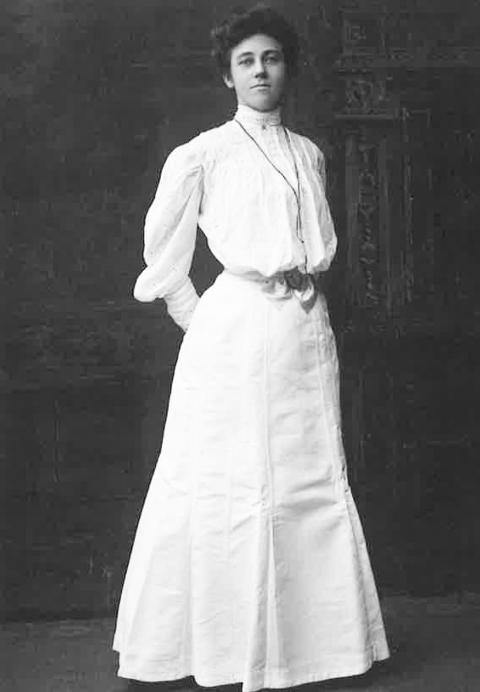Lizabeth Wiley and Greybull’s Town Records
By Kylie Louise McCormick
After WyoHistory.org published my recent article on 1920s Greybull Mayor Lizabeth Wiley, I was fortunate to receive more records of her time in office from Dana Carroll, Greybull’s current town clerk. These records survived the many floods Greybull, Wyo., population about 1,700, has faced since Wiley’s three terms in office—including a flood just a few months ago.

Ordinances and town-council meeting minutes do not reveal much about Wiley’s fight against the KKK. They do show her extensive support of the Fire Department and better safety regulations. Her fight to uphold the prohibition laws also makes only a brief appearance in the minutes, with her appointment of a special police officer to monitor public dances.
Her support for business interests in Greybull is most apparent in the records. The town surveyed business owners for their opinions on matters concerning tourism, for example. In the same vein, Wiley supported a proposal from the organizers of the Black and Yellow Trail to paint the town’s new water towers yellow to advertise Greybull on the route from the Black Hills to Yellowstone. She also, at the suggestion of the Greybull Lions Club, entertained the idea of a land purchase for the town’s first airport.
Especially interesting was Wiley’s detailed history of the Greybull Library. Originally, it was exclusive, open only to members of the Fortnightly Club or, for non-members, a monthly fee of $1. When Wiley arrived in Greybull in 1914, the club had been gathering and lending books for several years. Soon, she found herself housing the books and joining the club. But she also formed a friendship with Dr. Bertha Hamilton, who opposed the exclusivity of the club and the idea of renting books.
Dr. Hamilton convinced Wiley to start gathering books for a free library. Wiley eventually negotiated a merger of the two collections, to create what has become today’s Greybull public library. She helped secure the library’s first town funding, helped grow its collection and then witnessed its evolution into a branch of the Big Horn County Library. All this happened before she was mayor—and shows her careful politicking among small-town grudges.
It was also exciting to find that Greybull’s Town Hall has preserved some of Wiley’s personal photographs. She never married and had no children to save her papers after she died in 1957. With Greybull’s history of flooding, I was worried that the only records preserved would be the newspaper accounts and Wiley’s correspondence with University of Wyoming Professor Grace Raymond Hebard at the American Heritage Center.
It is thanks to Hebard that we have Wiley’s frank accounting of the Klan’s activities in Greybull, as her fight against the KKK appears only obliquely in the newspaper and official town records. But it is thanks to the Greybull Town Hall, and the public servants since 1930 who have preserved Wiley’s records, that we have these photographs now.
I am pleased to report that the wonderful people up in Greybull seem to agree with me about Wiley’s importance. Eddie Johnson, director of the Greybull Museum, has made the most of the latest flood to update the museum’s exhibits, including one on Lizabeth Wiley. They open back up to the public today, Thursday, May 18.
